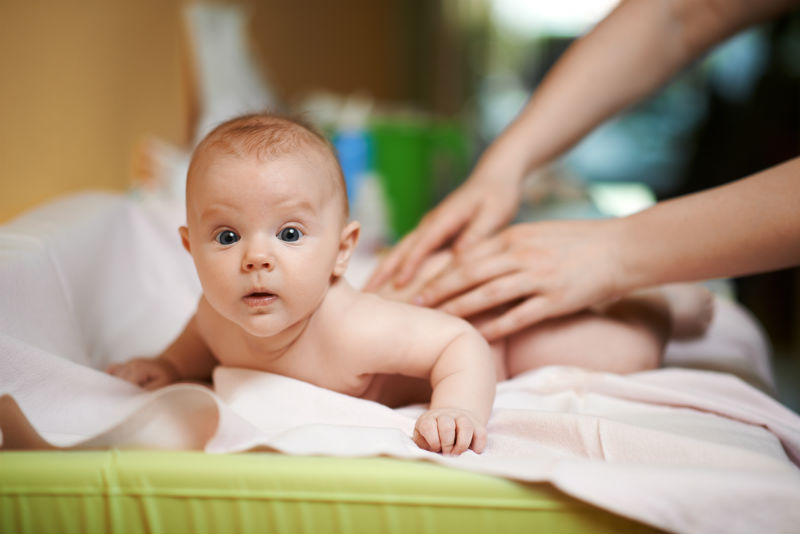Any parent knows that when you have a new baby, you can accumulate a lot of baby gear—car seat, bassinet, changing pad, swing, and more. But new gear isn’t the only thing accumulating in the house. Researchers have found that the baby gets not just comfort from all that gear, but also cancer-causing flame retardants that escape from the foam and wind up in their bodies.
Dr. Kate Hoffman of the Stapleton lab at Duke University led a study that asked whether infants in homes with more foam-containing baby products had greater exposure to flame retardants. They recruited families of 43 infants, and collected urine samples from the babies to measure exposure to some of the most commonly used flame retardants including chlorinated Tris. Families answered questionnaires on how many baby products they owned.
The results were striking: all infants had evidence of exposure to chlorinated Tris. And those infants whose families owned more baby products had significantly higher exposure to chlorinated Tris, also known as TDCPP. Children whose homes had more than 17 products had levels nearly seven times greater than those in homes with 12 or fewer.
Researchers also wondered whether where infants spend their time influences their degree of exposure. Their results provide more information on exposures in childcare centers, finding that infants attending them had greater exposure to chlorinated Tris.
Chlorinated Tris, once removed from use on pajamas because of its link to cancer, has been used heavily in polyurethane foam in furniture and children’s products. After its designation as a carcinogen by the State of California its primary U.S. producer announced it would cease production. However, use of a closely related compound known as TCPP has increased.
In 2016, legislators in Washington state and several other states will have the opportunity to protect babies from the most toxic flame retardants as bills to ban these compounds in consumer products are expected to be introduced.
In Washington state, legislators will consider the Toxic-Free Kids and Families Act, a bill to ban toxic flame retardants in children’s products and furniture and ensure they are not replaced with other harmful chemicals. It came close to passing this year. Legislators should consider this new evidence that having less toxic flame retardants in our homes means less cancer-causing chemicals in our babies, and pass the Toxic-Free Kids and Families Act in 2016.





